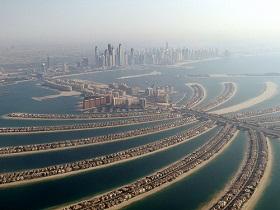Using AI to control energy for indoor agriculture
30 September 2024
Published online 17 November 2011

Untrammelled development, weak regulatory oversight and a lack of scientific monitoring are seriously threatening ecosystems along the coast of the Gulf, according to an extensive assessment of the region's marine environment.
Sea-front projects ranging from desalination plants to artificial islands in the gulf between the Arabian Peninsula and Iran have transformed the entire coastline in the past few decades. More than 40% of some countries' shores are now developed. The change is happening more quickly, and with greater environmental impact, than in any other coastal region. "Things are being put in place so quickly we don't know what is going to happen," says Peter Sale, a marine ecologist at the United Nations University (UNU) Institute for Water, Environment and Health in Hamilton, Ontario, Canada, who co-authored the report1.
The report synthesizes existing research with the UNU team's own assessments of the impact of projects such as Palm Jumeirah, an artificial archipelago more than 5 kilometres wide in Dubai in the United Arab Emirates. Some 94 million cubic metres of sediment were dredged up to make the islands. Sale says that such projects are "so substantial that they have changed the ecology in ways that are only going to become clear in decades".
The report says that legislation and regulatory frameworks are often inadequate to properly monitor such projects. Environmental assessments that could take a year in Western nations might be done far more superficially in ten weeks in the Gulf, for example. And a lack of scientific input to the development process means that there is often little or no environmental monitoring. "There is a clear deficit, not only in the capacity but in scientific knowledge, and a limited amount of scientific data on which to base decisions," says report co-author Hanneke Van Lavieren, a programme officer for coastal ecosystems at the UNU.
The problem is becoming increasingly urgent. The region has already lost 70% of its coral reefs since 2001, with most of the remaining reefs threatened or degraded, for example2. Construction of Dubai's Palm Jebel Ali, an even larger artificial archipelago, has already destroyed 8 square kilometres of natural reef, the report notes.
"All the ecological trajectories are downhill," says Charles Sheppard, an ecologist at the University of Warwick, UK, who has studied environmental change in the Gulf. "The prognosis isn't good unless there is major change."
This article was published in Nature 479, 277 (17 November 2011) doi:10.1038/479277a
1. Van Lavieren, H. et al. Managing the Growing Impacts of Development on Fragile Coastal and Marine Ecosystems: Lessons from the Gulf (UNU, 2011).
2. Wilkinson, C. (ed.) Status of Coral Reefs of the World: 2008 (GCRMN, 2008).
doi:10.1038/nmiddleeast.2011.155
Stay connected: